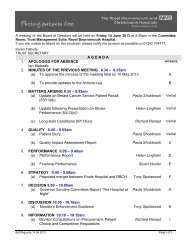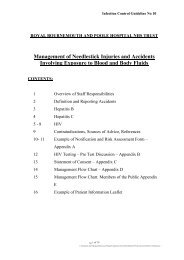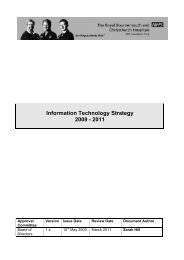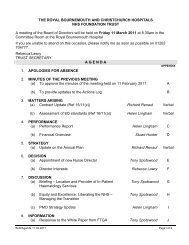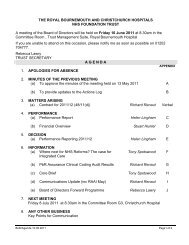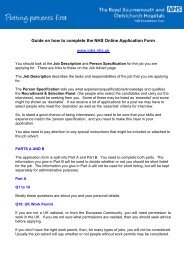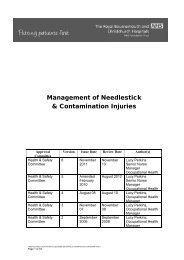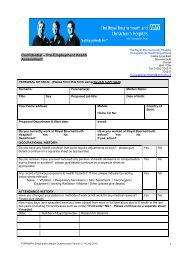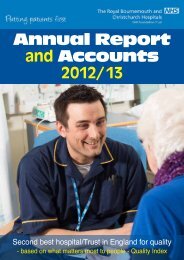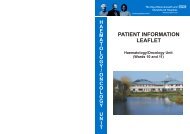Resuscitation Policy (DNAR) July 12 - Royal Bournemouth Hospital
Resuscitation Policy (DNAR) July 12 - Royal Bournemouth Hospital
Resuscitation Policy (DNAR) July 12 - Royal Bournemouth Hospital
- No tags were found...
Create successful ePaper yourself
Turn your PDF publications into a flip-book with our unique Google optimized e-Paper software.
The date and time of giving a <strong>DNAR</strong> decision should be clear and fullydocumented using the <strong>Resuscitation</strong> Order Form (Appendix 2, <strong>DNAR</strong> policy)together with the clinical justification and when applicable, the documenteddiscussion with the patient. The reasons and circumstances of any <strong>DNAR</strong> decisionmust be reviewed regularly on the junior staff and consultant ward rounds. This isessential if there is a material change in the patient’s clinical condition. Anychanges must be fully documented. The nursing staff are encouraged andexpected to raise the issue of resuscitation status of a patient with the medicalteam at these rounds or at other times when appropriate. The resuscitation statusmust be communicated at each patient handover. Importance is placed oncommunication of the resuscitation status to any personnel involved with theclinical management of the patient, e.g. radiographers, physiotherapists etc.When a clinical decision is made that CPR should not be attempted, because itwill not be successful, and the patient has not expressed a wish to discuss CPR, itis not necessary or appropriate to initiate discussion with the patient to exploretheir wishes regarding CPR. However, this decision must be the right one for thepatient. In some circumstances it may be best to explain such a decision to apatient rather than them finding out by chance that a decision has been madewithout them being involved or being informed of it.Uncommonly, some patients for whom a <strong>DNAR</strong> decision has been establishedmay develop cardiac or respiratory arrest from a readily reversible cause such aschoking, induction of anaesthesia, anaphylaxis or blocked tracheostomy tube. Insuch situations CPR would be appropriate, whilst the reversible cause is treated,unless the patient has specifically refused intervention in these circumstances. Inaddition to reversible causes, it may be appropriate to temporarily suspend adecision not to attempt CPR during some procedures if the procedure itself couldprecipitate a cardiopulmonary arrest – for example, cardiac catheterisation,pacemaker insertion or surgical procedure.2.3 Decisions about CPR that are based on the balance of benefits and burdensSome patients do not fall easily into the categories 2.1 and 2.2 above even thoughCPR may be successful in re-starting the patient’s heart and breathing. Then thebenefits of possible prolongation of life must be weighed against the potentialburdens to the patient. This is not solely a clinical decision and in this situation thepatient’s informed views are of paramount importance. The views of members ofthe medical and nursing team involved in the patient’s care are also valuable informing a decision.2.4 Communication and discussion with patients who lack capacity or those closeto patientsIf a patient lacks capacity, any previously expressed wishes must be taken intoaccount when making a CPR decision.Consideration of whether the benefits of attempting CPR would outweigh the risksand burdens for the patient should be discussed by the healthcare team, andthose close to or representing the patient. Such considerations should always beThe <strong>Royal</strong> <strong>Bournemouth</strong> & Christchurch <strong>Hospital</strong>s NHS Foundation Trust<strong>Resuscitation</strong>/Do Not Attempt <strong>Resuscitation</strong> (<strong>DNAR</strong>) <strong>Policy</strong> (<strong>July</strong> 2008) Reviewed Jan 2011Author: <strong>Resuscitation</strong> Committee Page 5 of 11



